Better late than never. That is what we have to say about this review being late, and I suppose that is what 4A Games will have to say by the time Metro Exodus arrives on PC storefronts other than the Epic Games Score a year after the game’s launch.
Metro Exodus being a one year timed exclusive for Epic Games came as a surprise, but at least 4A Games and Deep Silver honored all preorders, so we shouldn’t go too hard on them for this. The same cannot be said for other studios however. Remember, don’t allow yourself to be cheated, or else it will continue to happen and only get worse.
Launch controversy aside, Metro Exodus represents a significant departure to the franchise norms. Metro Exodus is loosely (and really just in part) based on Metro 2035, sequel to Metro 2033, novels written by Dmitry Glukhovsky. More specifically, the first hour of the game is a loose adaptation of the beginning and near the end of Metro 2035, with the rest of Exodus acting as a sort of fan sequel to Metro 2035. The name gives it away; it is an exodus, a departure from the Metro, referring to the Moscow subway system in which Moscow’s population took shelter during a nuclear war that ended civilization worldwide.
The previous games, Metro 2033 and Metro: Last Light, take place in the Metro. We won’t spoil why you leave in Exodus, but you do. And for book fans, it barely takes after Metro 2035 in this regard. This isn’t a flaw, just a warning. Though it would’ve been interesting to see a Metro 2035 video game adaptation (as well as a more direct Metro 2033 adaptation), it looks like that was never meant to be.
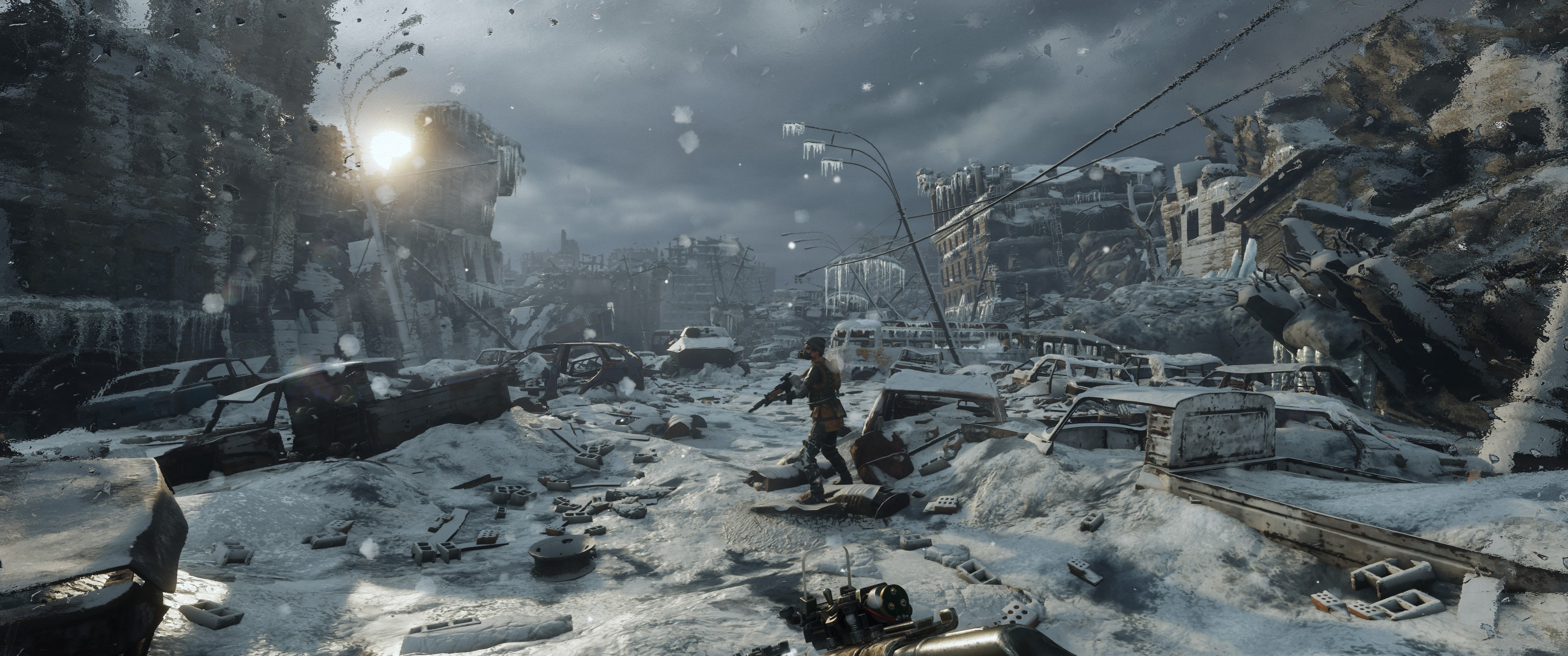
No longer will all outdoor areas look like this in Metro Exodus. In terms of environments, Exodus opens in an area more like Metro: Last Light and ends in an area like you’d find in Metro 2033.
Because of these changes, Metro Exodus is no longer a strictly linear FPS. General story advancement is still linear; new areas are unlocked in linear fashion, one at a time, but now Metro Exodus features two particularly large, non-linear maps, with the rest of the maps being smaller and more linear than these. These two large maps, Volga and Caspian, are set outdoors; it’s still winter in the former while the latter is a desert. They are close in size to S.T.A.L.K.E.R.’s larger maps, a game people like to compare to Metro and a game with similar heritage (with Metro being developed by some former S.T.A.L.K.E.R. developers.
You leave Moscow although by the end of the game, you return to some place similar but even worse. It is quite the broad adventure, far and wide and filled with ups and downs. You once again assume the role of Artyom, part of a team that includes other members of the “Spartan Rangers” (a Polis military force comprised of former soldiers and special forces operatives in the games, quite different than “The Order” from the books which this is loosely based on) including Artyom’s wife Anna, a character from Metro: Last Light, and the head honcho Miller, Anna’s father and a character in every Metro game.
On that note, Anna’s character is inconsistent in Exodus. In Last Light she’s a hard-ass, not willing to give you the benefit of the doubt and talking down to you the entire time. Now she is suddenly the utmost loving, adoring wife.
The initial goal is to survive and make contact with what remains of the Russian government, before the goal shifts to looking for a new home to settle in, and finally it becomes a rescue mission as one of your crew members becomes fatally ill and one of your team members happens to know the precise location of where to find prototype medicine with seemingly divine healing capabilities to save them. Deus ex machina at its finest, although at least said location containing the medicine is known for its medical facilities.
Besides this last plot point relying too much on deus ex machina, another noteworthy, and much bigger flaw in the game’s writing is Artyom being a silent protagonist. It wasn’t a problem at all in Metro 2033, and it was mostly a nonissue in Metro: Last Light, but in this game Artyom is pulled into conversations, questions, debates, and is even instructed to try to convince Miller of something, all while being unable to speak except during loading screens where he does speak. What the hell? It’s jarring and soils the narrative often, and limits potential for Artyom as a character. And it’s just plain stupid.
Anna: Artyom? Come in! Please!
Artyom: Says nothing even though he is able to hear her and is 100% capable of responding. Would rather leave his wife in suspense about whether or not he is alive and has no interest in ever speaking to her again.
The first hour of the game, which sees your departure from the Metro, is also painfully rushed. They tried to sum up an entire novel in an hour; way too much happens in too short of a timespan. It does not flow together well at all, and they missed out on the opportunity to include Metro 2035’s gargantuan twists (including the biggest twist I’ve ever encountered in my life).
But throughout your journey, you do get to know your friends to some extent. They develop personalities of their own and actually have some thoughtful conversations, meaningful dialogue (never including you, silent Artyom) which is something extremely rare even in “story driven’ video games. They talk about what you would expect people to talk about in a post-apocalyptic world leaving the Metro for the first time, topics such as what they are leaving behind, what they hope to find at each place you visit, the war that ended it all, supposed occupation forces, other factions you encounter, relevant past stories. One of your crew members is even an American. Metro Exodus does well here, where most other games would just waste your time. It does so well that it feels confident sitting you down at a table and having long discussions, which you can always turn your back on but you probably won’t.
Metro Exodus has two endings just like its predecessor. One good, one bad. Attentive players are treated to the good ending, though it’s not hard to get. I’m guessing the good one is also the canon ending.
But the main feature of Metro Exodus is atmospheric immersion. That is the differentiator for this franchise in general, and what each and every Metro game banks on. Once again, 4A Games demonstrates their expertise here. Locations are thoughtfully and authentically crafted and detailed, showing signs of what might have transpired or how long they have been abandoned or what might have happened here before the war. Real places tell stories of their own, and the Metro games go further than most to replicate this, and Exodus is no exception.
The two largest and most open maps provide the player with the most exploration, the most loot to find and the most people to encounter (not all encounters are violent, although most are), although most agree that the most atmospheric mission is the final one, which ironically is set in a metro in a place hit nearly as hard as Moscow. Exodus contains many throwbacks to the previous Metro games, very specific ones too: one map strongly resembles D6 (and it makes sense that it does) which is a pivotal location in the franchise. You find a room that strongly resembles the first place you visit on the surface in Metro 2033. You find an area that resembles the haunted apartment complex in Metro: Last Light. Once again you find yourself searching old archives for something important, desperately hoping it’ll be there, and during one of these instances you are doing this in a map that resembles the library in Metro 2033 and features mutants that resemble Metro 2033’s librarians (the game version at least). This is not a lack of creativity, they are thoughtfully included.
As a First-Person Shooter, the first thing I will say is DO NOT PLAY THIS GAME ON RANGER HARDCORE MODE. 4A Games still has amnesia and forgot how Ranger Hardcore was logically designed in Metro 2033 the original, but has been terrible in all their games since then. Ranger Hardcore still gives you an invisible inventory menu. Yes, an invisible inventory menu. Take that in. Why? What? We don’t know. It also removes manual saving and relies on checkpoints; this works fine for some games, but not at all for others. For this game, it does not work at all. Large maps, the player dies easily, and you can go 20+ minutes without an autosave. No thanks. Difficulty mode also cannot be changed in-game, but tweaking a CFG file can achieve this. This is what I did, and I’m not ashamed of it.
Moving on, Metro Exodus takes advantage of its open areas in some ways. The most notable one to me was its dynamic mutant AI, seemingly resembling the A-Life seen in the S.T.A.L.K.E.R. games. You will see mutants fight and feed, to make the world seem more alive. It is not as complex as A-Life and unfortunately limited to mutants; you know exactly when and where you will fight humans throughout this game, which is a downside. You can’t be surprised by human combat encounters.
Perhaps the most noteworthy thing to me about the gameplay of Metro Exodus, good or bad, is in this case a bad thing: clunkiness. As someone used to playing FPS games designed for PC, offering ultra precise movement whether it’s for competitive gameplay or just general skill-based gameplay, like the Shadow Warrior games, Dishonored games, F.E.A.R., Painkiller, and Half-Life series, I am relentless when testing a game’s general fluidity and clunkiness, and Metro Exodus fares poorly here. You cannot sprint more than a few meters without getting stuck on some small object or tiny ledge that should be automatically stepped over, something few games get wrong and most get right yet Exodus gets it wrong.
You can climb some, but not all ledges in this game, and climbing is quite clunky; it often doesn’t work when it should, requiring multiple attempts, and sometimes when you finish climbing you are immediately greeted to an overwhelming amount of mouse acceleration for maybe a second. Shooting is also clunky due to poorly placed invisible walls or similar flaws: for example, your bullets might hit an invisible wall that protrudes from an object, as if the model for the object is smaller than it should be.
The previous Metro games did not have this many mechanical flaws, and it’s addressable with patches although don’t expect it to be.
Another major flaw with this game’s gameplay is its AI. I don’t have major complaints for mutant AI, but the humans are stupider than the previous games and more limited than what I like to see. It seems 4A Games wanted to have the AI sprint more, but in this game they choose very bad times to sprint and will sometimes run towards you and then immediately turn their back and sprint away, letting you just shoot them in the back.
The game’s AI also breaks stealth gameplay. They can see through objects that they shouldn’t be able to see through, darkness doesn’t always seem to conceal you even when it should, and when one enemy AI spots you, all of them know your precise location. You know, typical garbage that should’ve disappeared from games 20 years ago but still lingers.
Speaking of stealth gameplay, this is always an option in Exodus, as it is in Last Light, yet you still cannot move unconscious bodies nor corpses in any way. As a stealth game, Exodus is a failure and stealth is thus not advised. Go for the kill.
As an FPS game, Metro Exodus is serviceable but lacks the evolution I had hoped the franchise would see after 9 years. We already mentioned the AI, which is a significant detriment to both stealth and FPS gameplay. 4A Games still hasn’t brought back the more realistic ballistics and ricochets from the original Metro 2033, but that’s not the end of the world. Metro Exodus needs more guns. It is a 30 hour FPS game with 9 guns. They plan to sell us more guns with DLC, and I bet this includes some unfinished guns that are still included with the games’ files. I played another 30+ hour FPS game recently; Shadow Warrior 2, and this one has 46 guns, not to mention 30 melee weapons and a seemingly infinite amount of upgrades for them to really change how they work even on a fundamental level. Not to mention Shadow Warrior 2 also demonstrates real gameplay evolution, something incredibly rare for FPS games since many of the absolute best FPS games are from the 2000s, but I digress.
Of these 9 guns, for some reason every AK-74 (actually AK-103 with wooden furniture for some reason) in this game for the first few hours (all of Moscow and Volga, and many others up to and including Caspian) have no upper receiver. Did Russia issue a bunch of AK-103s with wooden furniture and without upper receivers before the nuclear apocalypse or something? This is more of an observation than a gameplay flaw, but still.
Fundamental shooting mechanics are fine; guns are not perfectly accurate (even if some of the enemy AI are, to the point where some small sections of the game are ruined) and the feeling of recoil and sway are adequate for this type of game. The benchmark and pinnacle for me for this type of FPS game is Rising Storm 2: Vietnam, and Exodus does not reach those heights. Armor is ultimately effective in this game, although it doesn’t give you the ability to fire much better pre-war bullets with properties that make more sense, unlike the original Metro 2033.
Melee attacking is limited to rifle bashing for you. Equippable knives still hasn’t returned, only the original Metro 2033 had that. You can throw junk items as distractions, utilize throwing knives, molotov cocktails, and home made grenades. Beware of enemy melee attacks; they are more powerful than their guns. Especially the Fallout-ghoul-clone enemies; they can literally throw tin/aluminum cans at you with deadly effect, and one slap from them is deadly. These are flaws by the way, this is nonsensical illogical balance.
No modern game is complete without a crafting system, for better or worse. Usually worse. Luckily, the general crafting mechanics in Metro Exodus are great. You collect only two types of resources; one with a vial icon, used primarily to craft medkits and very expensive gas mask filters and clean weapons, and mechanical bits for upgrading weapons and such. Weapon conditioning is fairly well implemented in Exodus: you see the model of guns deteriorate as the gun deteriorates, rate of fire drops, and they can jam.
This brings us to weapon upgrading. I’m a harsh critic, but upgrading guns is something I am extra demanding of. Very few games satisfy me here, but ignoring this, the weapon upgrading of Metro Exodus is a mix of good, bad, and stupid. I’m not too demanding of weapon upgrading for this sort of game; more so for military themed games like Insurgency and Arma. The good: you can really change a lot about guns, making them compact or large, changing the furniture and adding or removing stocks, changing barrel lengths. The properties here make sense too.
The bad coincides with the stupid. Where to begin here? For some reason, certain optics can only attach to certain guns. This is not the early 20th century so this should no longer be the case. This is asinine. Sadly optics also do not have picture-in-picture visuals. Also, silencers cannot be removed from barrels. You can swap between a short barrel, a short barrel with a sound suppressor permanently affixed (even though it shouldn’t be permanent, the AK-103 one is even the standard PBS-4 model), a standard length barrel, and a longer/heavier barrel for most guns (the sniper rifle has even more). Illogical synthetic limitations, there is nothing I hate more about gameplay design.
Metro Exodus consists of traditional firearms as well as two less traditional that get their own special weapon slots; the Tihar and the Helsing. The former is strictly a pneumatic weapon, relying on air pressure that you manually pump. The latter has an optional pneumatic system in this game, which I don’t prefer to use. The Helsing is shown in the screenshot immediately above, it’s a highly upgradable crossbow and very well implemented. As a side note, Exodus is also one of few FPS games with a first person body mesh.
Other gameplay mechanics include the same things from the previous games; wearing gas masks in hazardous areas, wiping the mask clean if you can’t see, swapping gas mask filters if yours deplete, your gas mask can break and then you’re as good as dead if you need it (unless you can repair it right then and there). It lacks an advanced healing system, instead you stick magical needles into yourself and you’re good to go, like in the previous games and most other games. It now has resting. You do not automatically regenerate health, you need your medkit-needles or, if you’re at a resting spot, you can take a swig from your flask because that heals you for some reason.
I do like how enemies may actually surrender in combat, with early game enemies being more likely to do this. As with Last Light and Redux, QTE-based attacks exist in this game; if you sneak up on someone, you can press one key to silently kill them, another to silently non-lethally incapacitate them. Other QTE gameplay moments exist, such as a mutant pouncing you and you have to quickly press a key to break loose. This comes with its own flaws relating to poorly implemented invincibility frames: for example, you can blast a certain type of mutant with a lethal shot (e.g. shotgun blast to the face), but nothing will happen if it entered a leaping phase (even though you shot it before it leapt) which leads to a QTE battle. This crap might be popular on consoles, but it doesn’t make sense. But hey, you can use ziplines, that’s fun. You still have your battery charger for your flashlight, although you cannot use this enough on the environment.
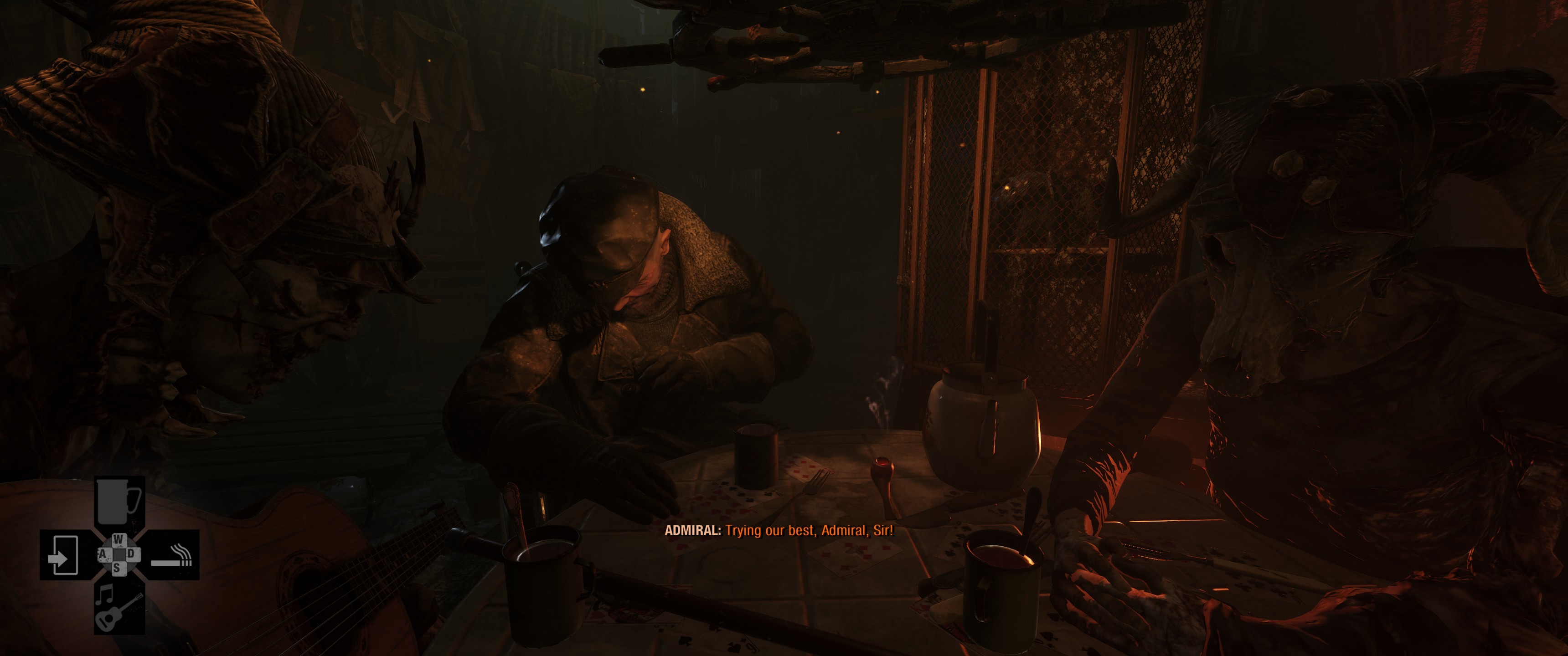
I like how bizarre some of these interactions are. Too bad Artyom can’t speak during them.
Ultimately, Metro Exodus is playable, but doesn’t showcase 9 years of gameplay evolution that I would hope for. Most modern shooters also do not, since so many 2000s FPS games reign supreme. Exodus shows regression in AI and clunkiness and a few smaller things, otherwise it has minor improvements over the previous games, and no major improvements sadly. With regards to FPS gameplay, it wants to play like a more realistic, gritty FPS, with Rising Storm 2: Vietnam being the current pinnacle of this, and the recently released Insurgency Sandstorm being another good recent example. I would’ve liked survival mechanics to evolve a bit too, perhaps with the ability to break bones and with an in-depth healing system like in Metal Gear Solid 3. Oh, I have many more wants, but I can go on all day so let’s finally move on.
Metro Exodus is one of those modern games that actually tries to catch up to the DirectSound3D/EAX sound processing of 1990s and 2000s games. It doesn’t quite reach those heights, but it does well. Basic reverb-based environmental sound effects exist, although surround spatialization is standard and more advanced effects do not exist. But the general sound quality of this game is excellent, as usual for the Metro games.
Voice acting is very good if you choose to use Russian voices. Sam, the American, even has a convincing American accent with his Russian speech. If you choose English voices, then you chose wrong! The voice acting there is horrendous and cringe worthy.
The visual quality of this game is artistically on the money, like the previous Metro games once again. This time with more diverse environments as these screenshots have already shown. As far as technical graphics go, the general rendering quality of 4A Engine remains above average, and the average in 2019 looks damn good already. Its HBAO surpasses most, and it has the best DXR implementation thus the most authentic dynamic lighting of any game. The general quality of textures and models is below average in the realm of AA and AAA games; lots of objects and surfaces look bad up close, but this is the case in essentially every game still. Volumetric effects are well above average, but various particle effects and such could use work (e.g. fire looks particularly horrible). PBR and SSR are above average but not the best. Only its DXR implementation is “the best” as far as technical graphics go. Character models are finally decent, a first for a Metro game.
Here is a technical overview of this game (Enhanced Edition):
| 64-bit | Yes |
|---|---|
| Linux Support | No |
| DRM Free Version Available | GOG Only |
| Graphics API | DirectX 12 Ultimate |
| Frame Rate | Unlocked |
| High Resolution Support | Yes |
| Ultrawide Support | Yes |
| High Refresh Rate Support | Yes |
| Borderless Windowed Support | Yes |
| VR | No |
| Display HDR | Yes |
| Shader Compilation Stutter | None |
| Ray Tracing | Yes (probe-based infinite bounce GI, some reflections) |
| Mesh Shader Virtual Geometry Pipeline | No |
| Micro-Meshes | No |
| Advanced Distance-Based Level Streaming System with No Loading Screens | No |
| Loading Times | Moderately Fast |
| Variable Rate Shading | Tier 1 |
| Sampler Feedback Tiled Texture Streaming | No |
| Sampler Feedback Texture-Space Shading | No |
| DirectStorage/RTXIO | No |
| Multicore CPU Support | 4-8 cores |
| GPU Physics | No |
| Adjustable FOV | Yes |
| Anisotropic Filtering | 16x |
| Anti-Aliasing and Upscaling | DLSS 2 without DLAA TAA Downsampling |
| DLSS/FSR/XeSS Used for Dynamic Resolution? | No, presets only |
| Sound API | XAudio 2 |
| Sound | Up to 7 channels |
| Dolby Atmos | Yes |
| UI Scaling | Yes |
| “Analog” Keyboard Support | No |
| Compressed Game Files | Yes |
| Debug Console | No |
| Modding | No |
I cannot call Metro Exodus a good game, but I also can’t call it a bad one. A very middling game. Like the other Metro games, it is usually immersive, except for when its poor writing breaks that immersion (issues the first two games did not have). It is clearly not a masterpiece, but it is better than most shooters, although that’s not saying a lot.
Every element of this game has noteworthy good and noteworthy flaws. It is more flawed than the games I prefer to play, and not a game I personally plan to revisit ever again because of that. It doesn’t do a whole lot to set it apart from all other games in the big picture, so it’s not something you need to play at once or multiple times. Feel free to wait for it to appear on other platforms than Epic Games Store, at discounted prices. Overall, Exodus did not meet my expectations (which were not very high).
Strengths:
- Atmosphere. From the general art design to the attention to detail on every level, the awesome storms, and the design of most of the scripted encounters, this game is wonderful at creating immersive atmosphere. This is its core strength.
- The characters and their dialogue are actually sufficient to keep you engaged for an unusually lengthy 30 hour (for completionists) FPS game. No, character development is not world class even by video game standards, but it actually portrays interesting people rather than just blabbering idiots, damsels in distress, or stereotypical caricatures.
- Scripted story moments are usually well done and intriguing, after the first hour at least.
- You don’t have to kill everything you come across, you can hide and try to utilize stealth.
- Rudimentary survival mechanics function adequately.
- An actual well implemented, simple and non-intrusive crafting system.
- Sound effects.
- Voice acting when set to Russian.
- I like the talking gorilla mutants. They’re actually creepy.
Weaknesses:
- Artyom being a silent protagonist severely hurts the narrative.
- Anna’s character is a bit inconsistent compared to Last Light.
- Surprisingly clunky movement. Character too easily gets stuck on small objects and ledges, and climbing needs a tuneup.
- It’s a cover shooter with no leaning.
- Extremely rushed first hour flows poorly.
- Blatant reliance on deus ex machina for the final plot point.
- Stupid human AI.
- Despite the much larger maps, you always know exactly when you will get into combat with humans. No dynamic human AI and a severe lack of pseudo-random encounters.
- Stealth gameplay is quite terrible due to how the AI works, and as a bonus you can’t move bodies around.
- Illogical limitations to the weapon upgrading system.
- Balance issues, such as enemy melee attacks being stronger than their guns, some enemies have near perfect aim at long distance with automatic weapons.
- Ranger Hardcore mode has a silly illogical design, but just avoid it.
- Timed Epic Store exclusivity is anti-consumer.

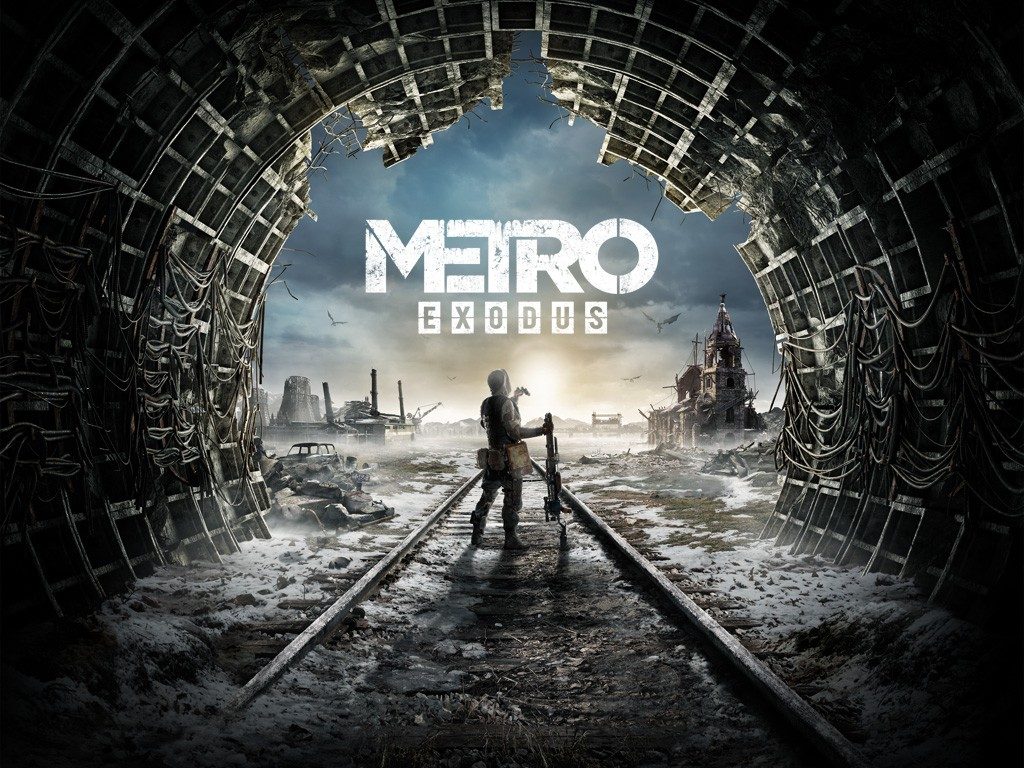
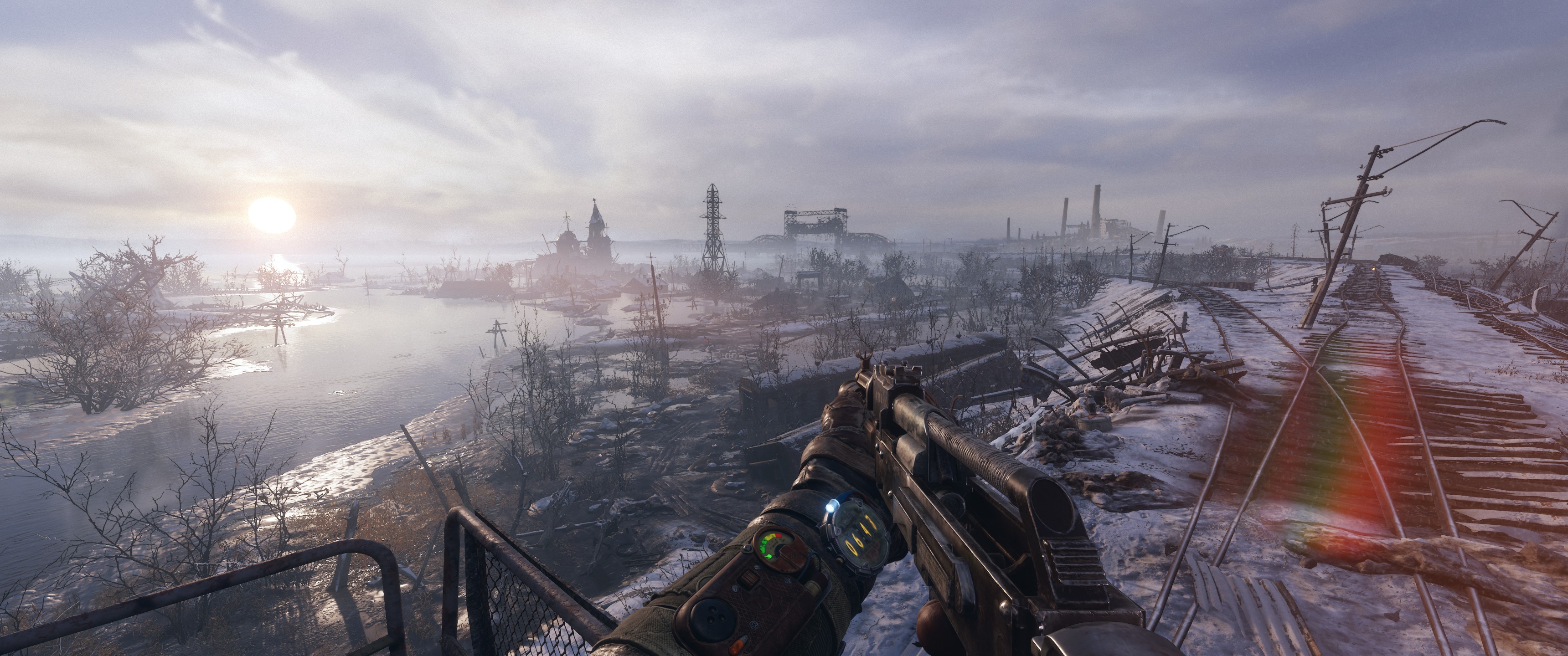
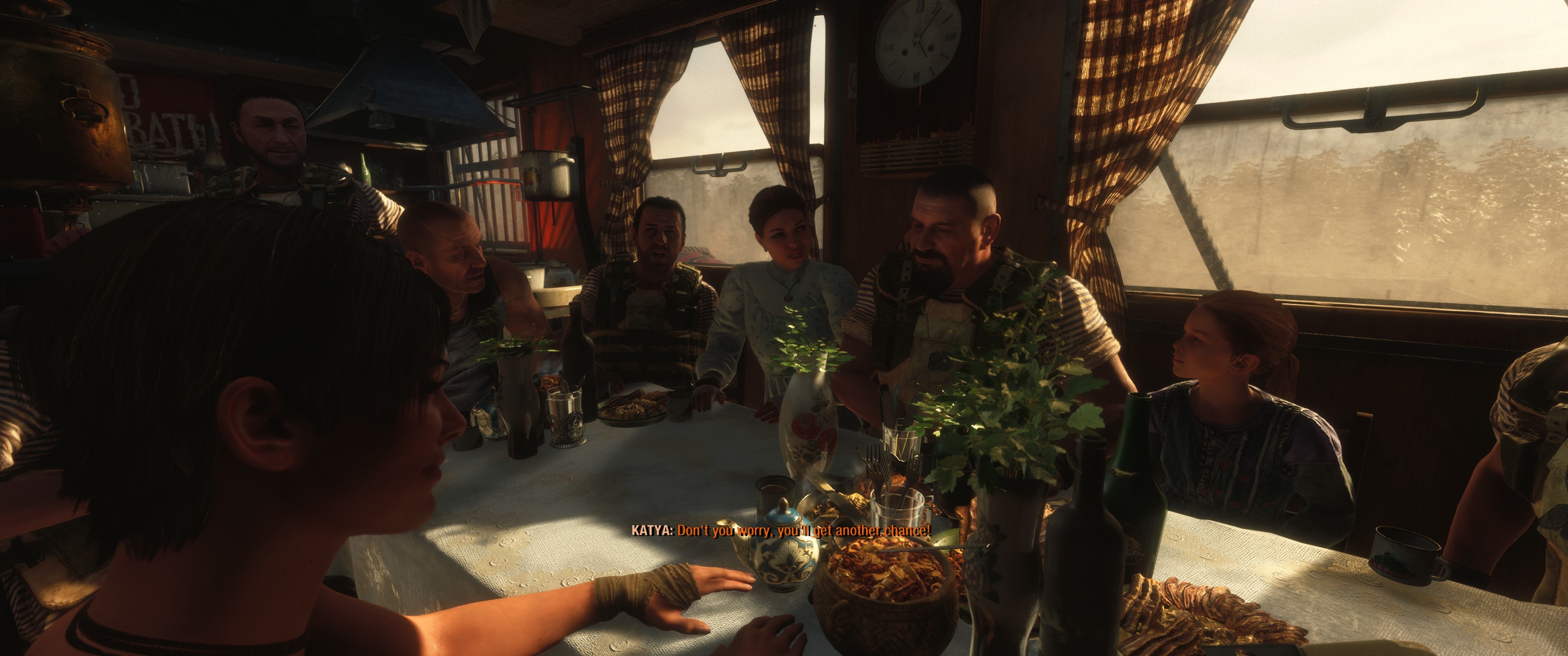
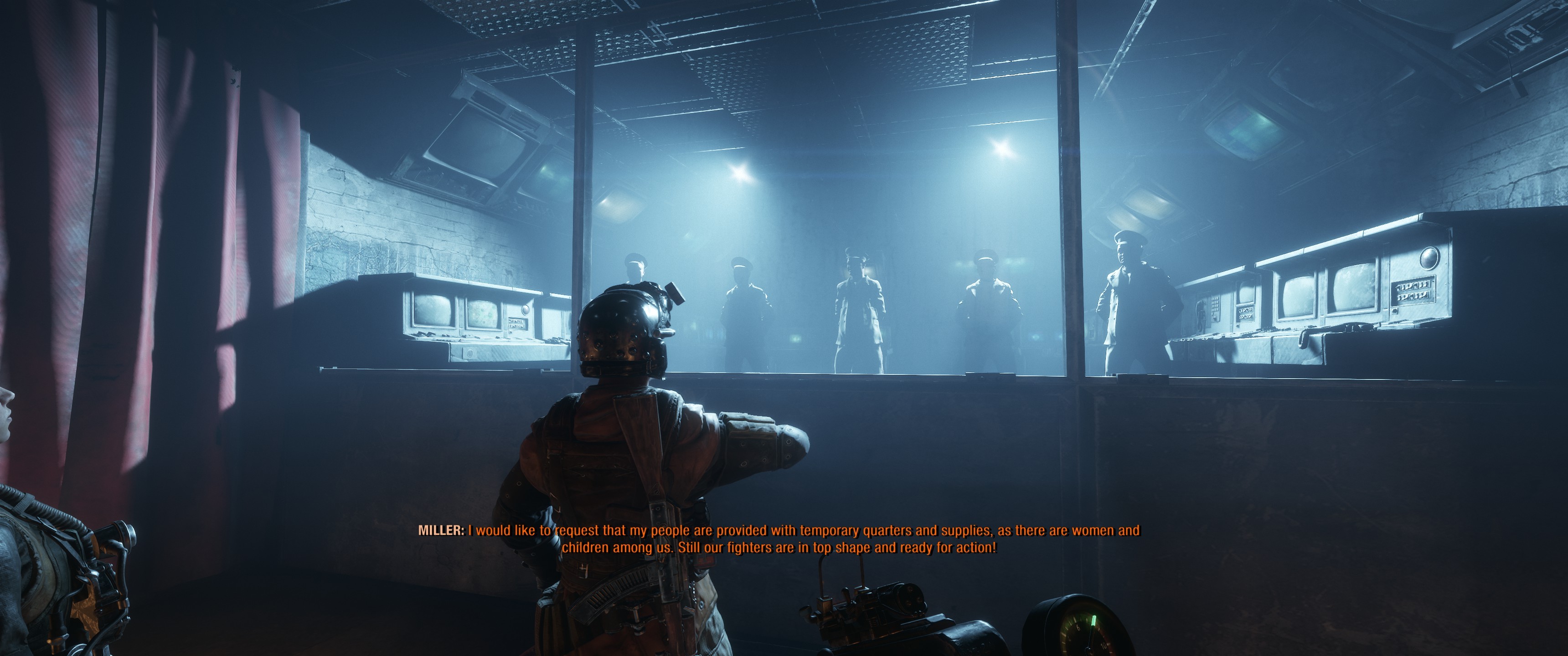
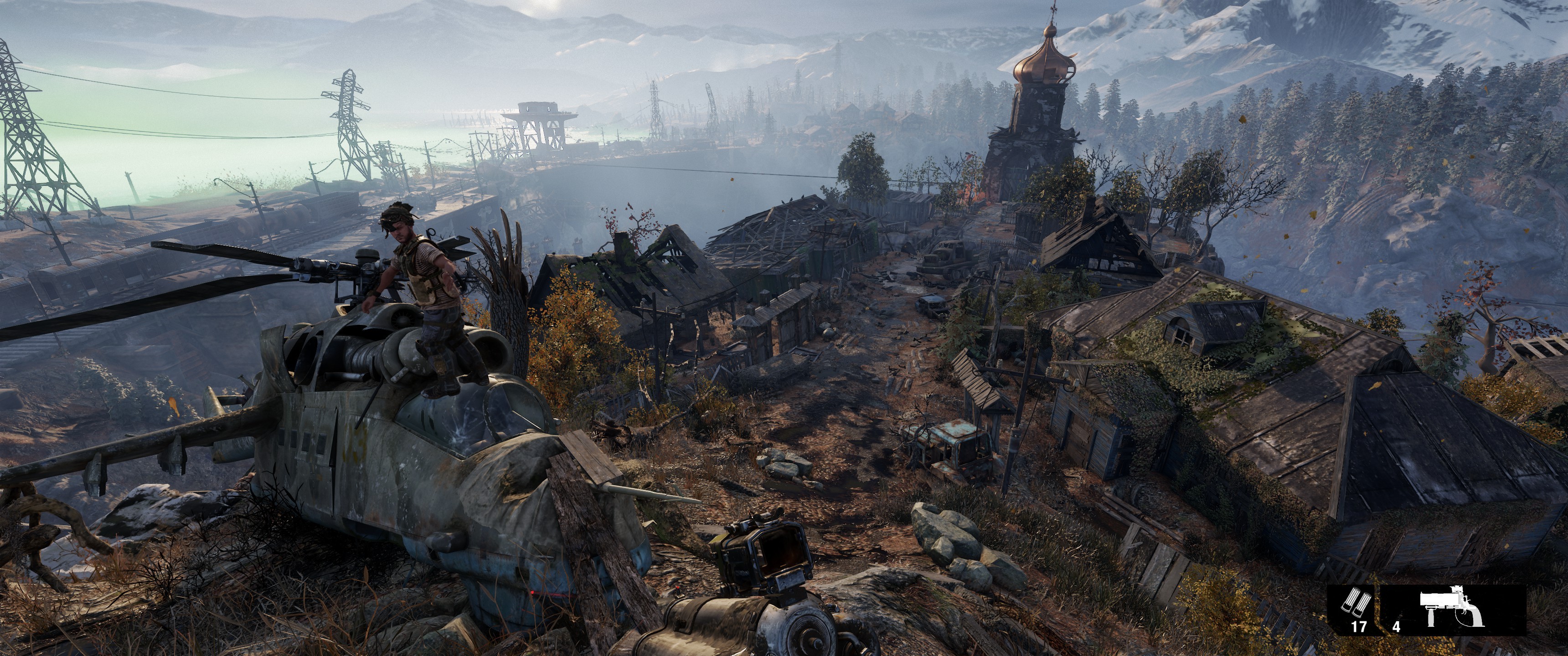
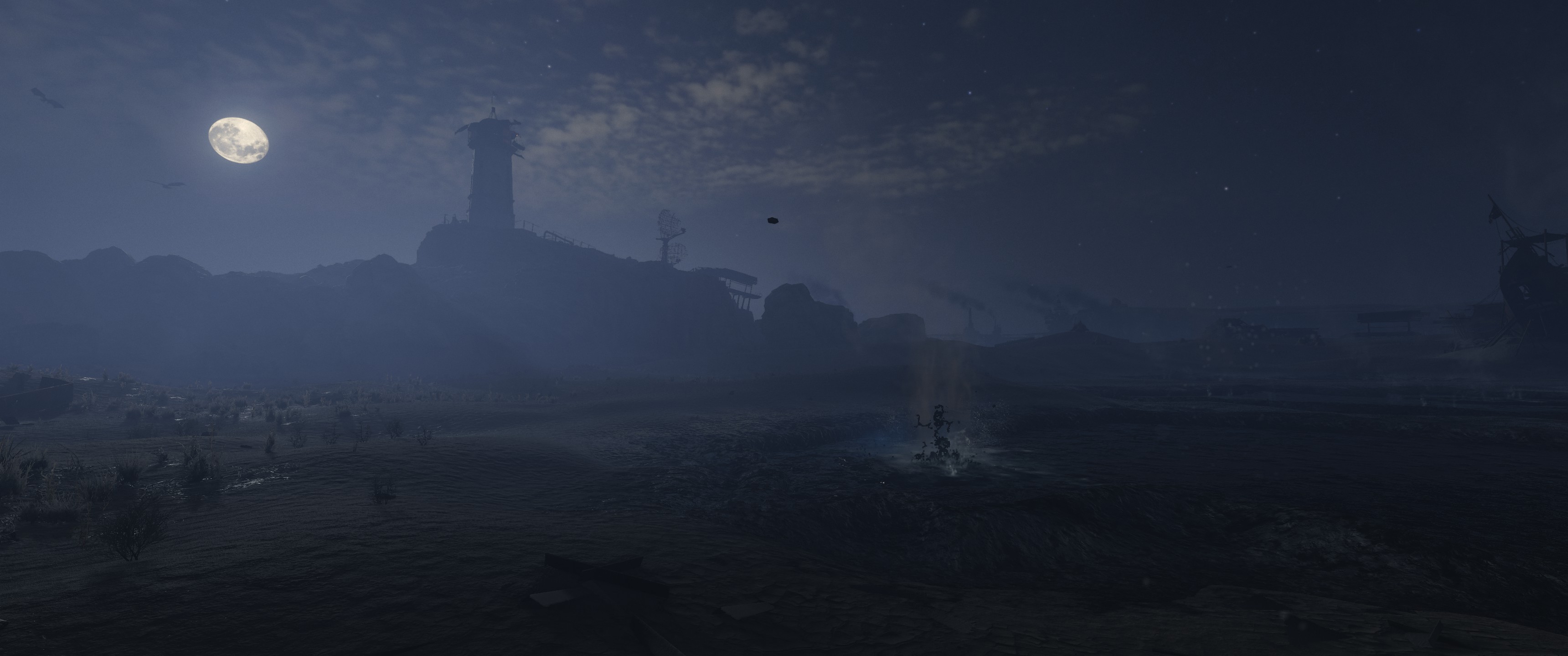
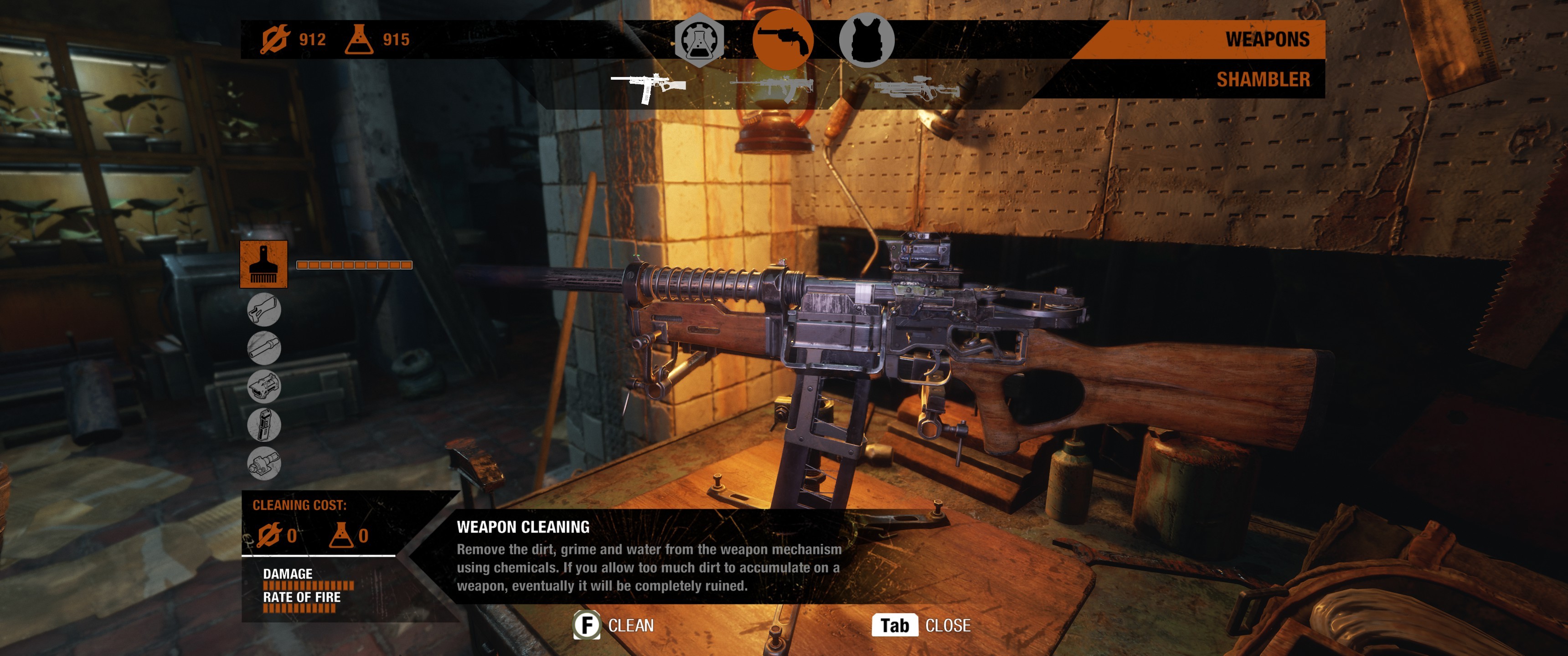

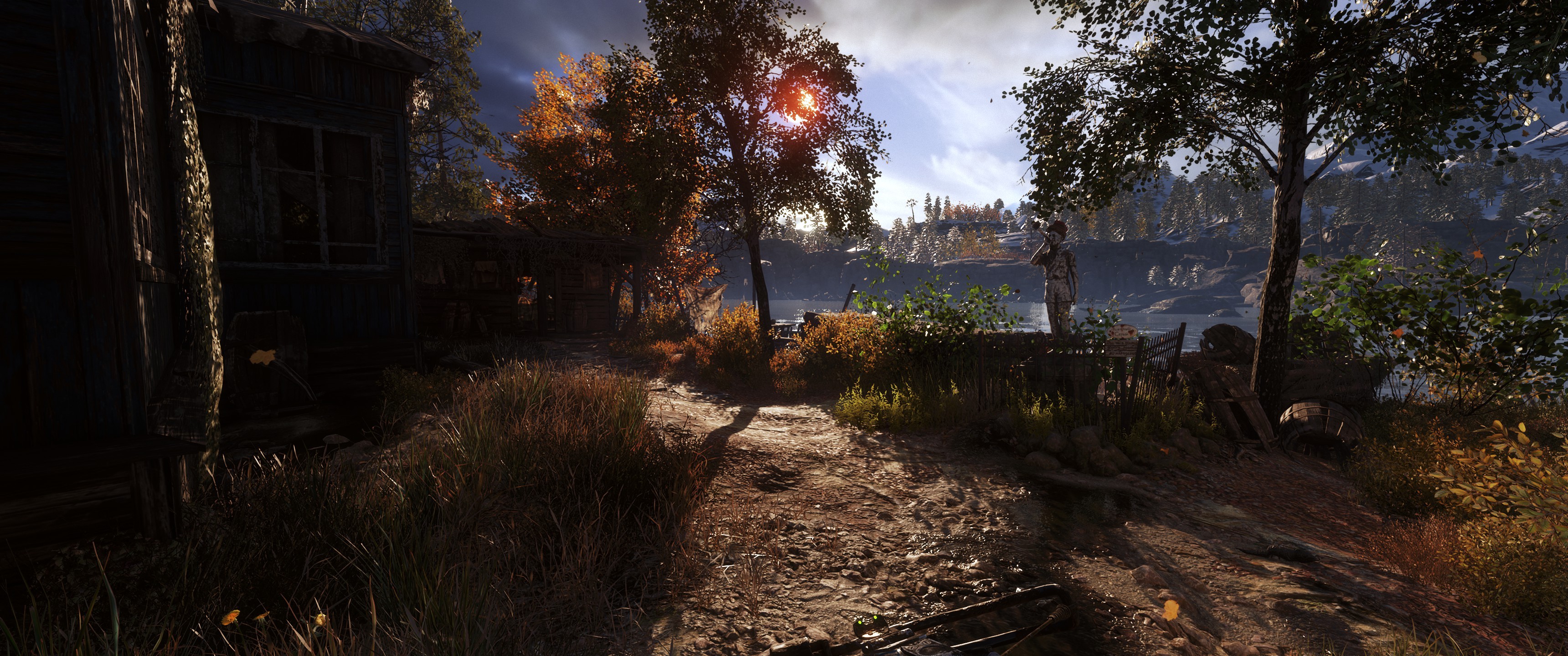
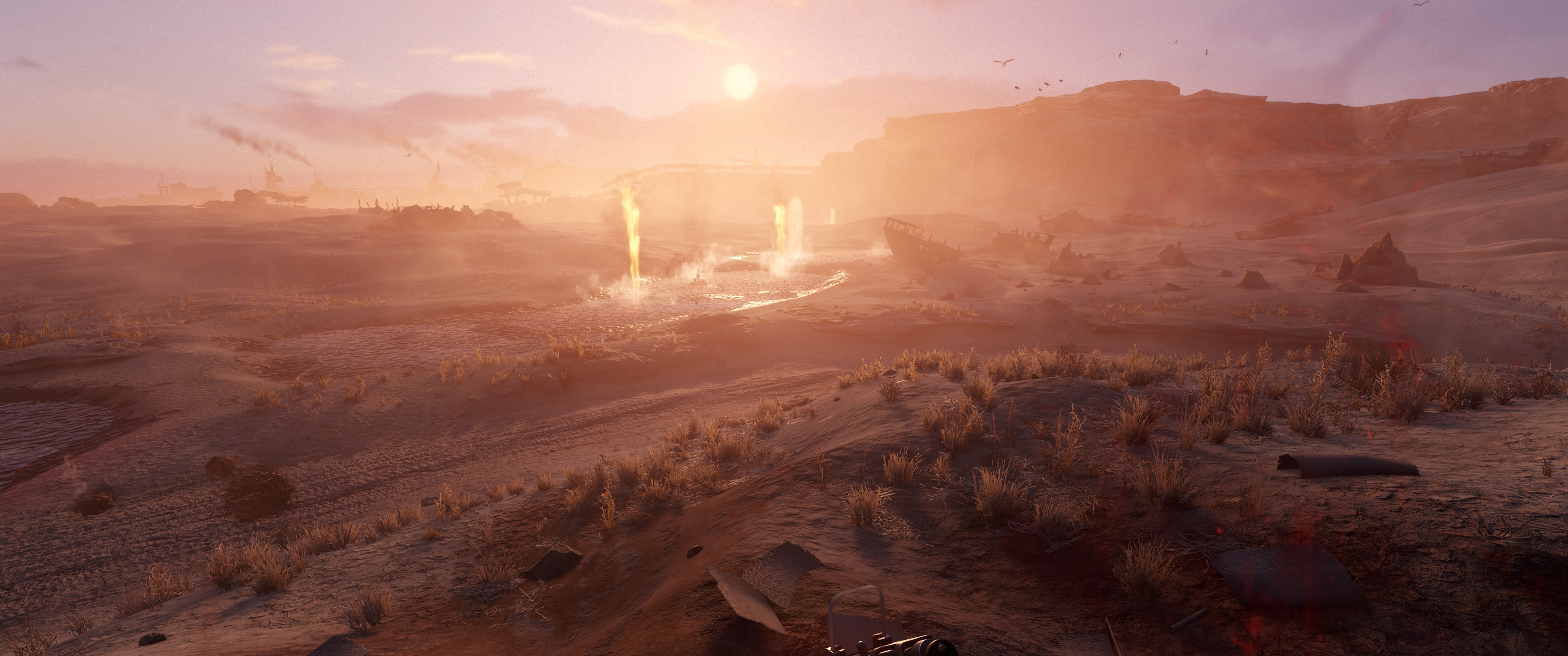
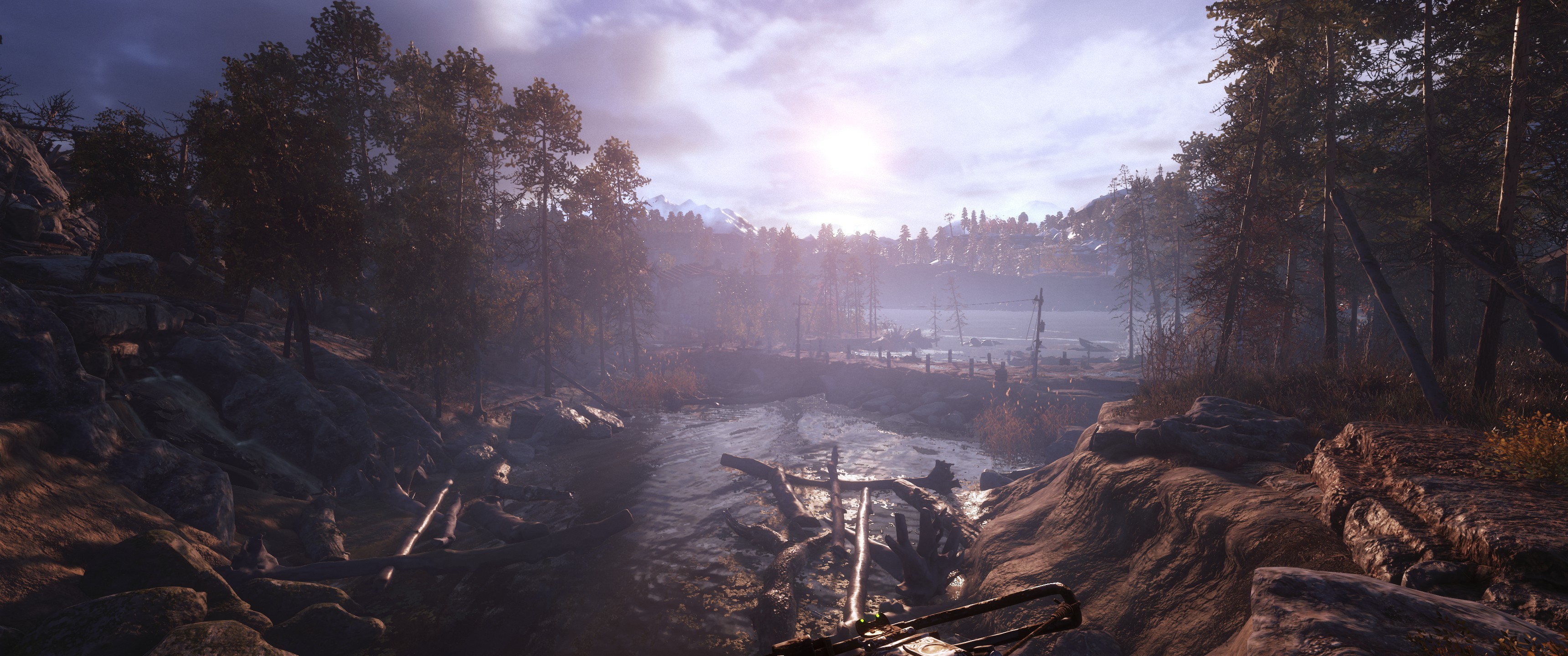

 (6 votes, average: 4.33 out of 5)
(6 votes, average: 4.33 out of 5)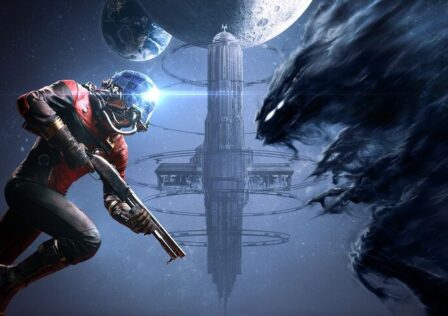

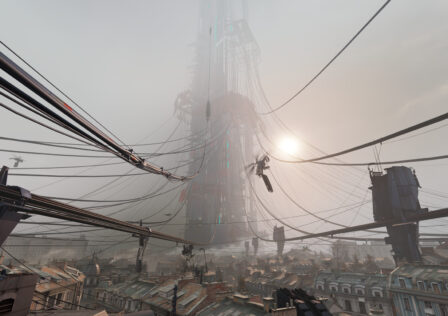
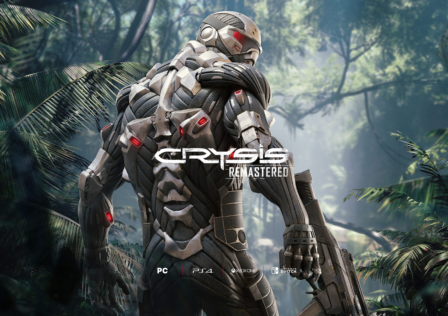
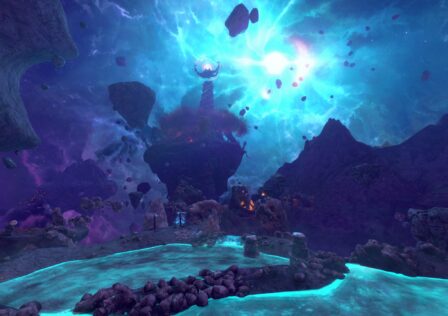
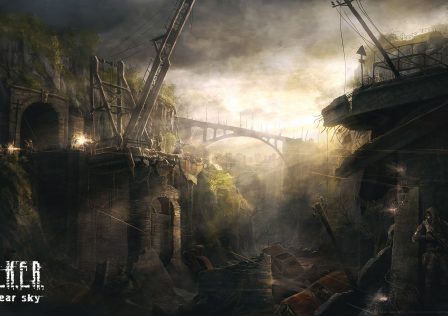



One thing worth mentioning is that in this iteration there is (finally) an optional minimal HUD when playing on Ranger Hard Core.
Yes, a thing we like. Still, the mode needs work 😛